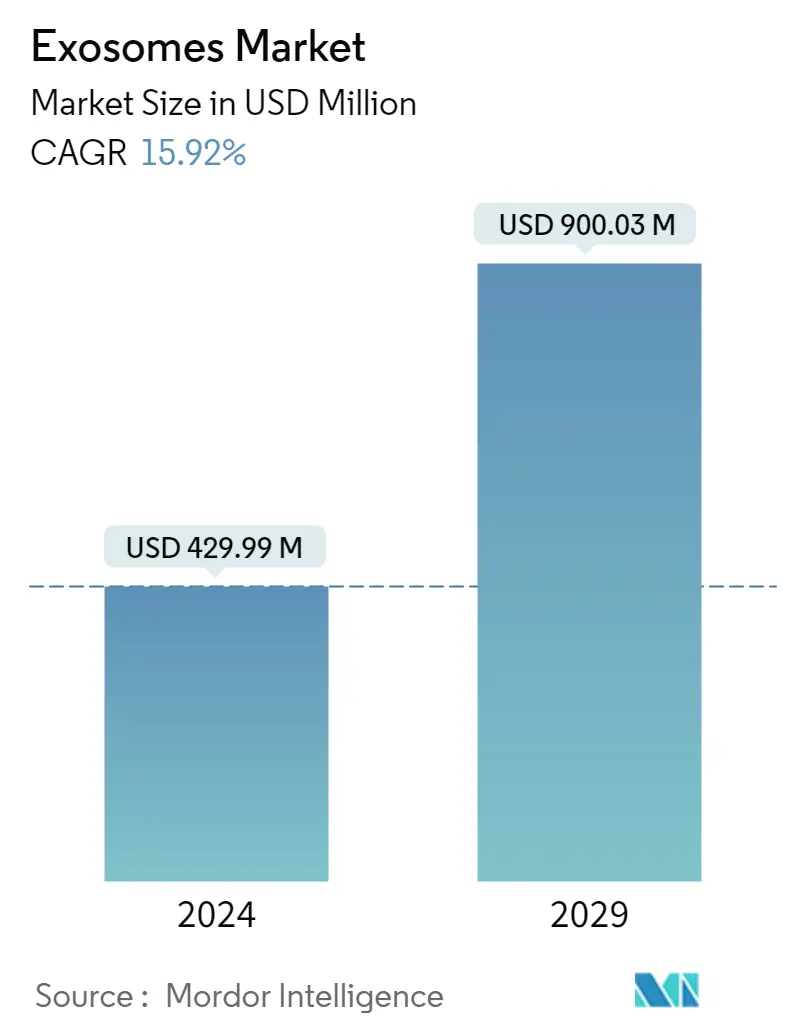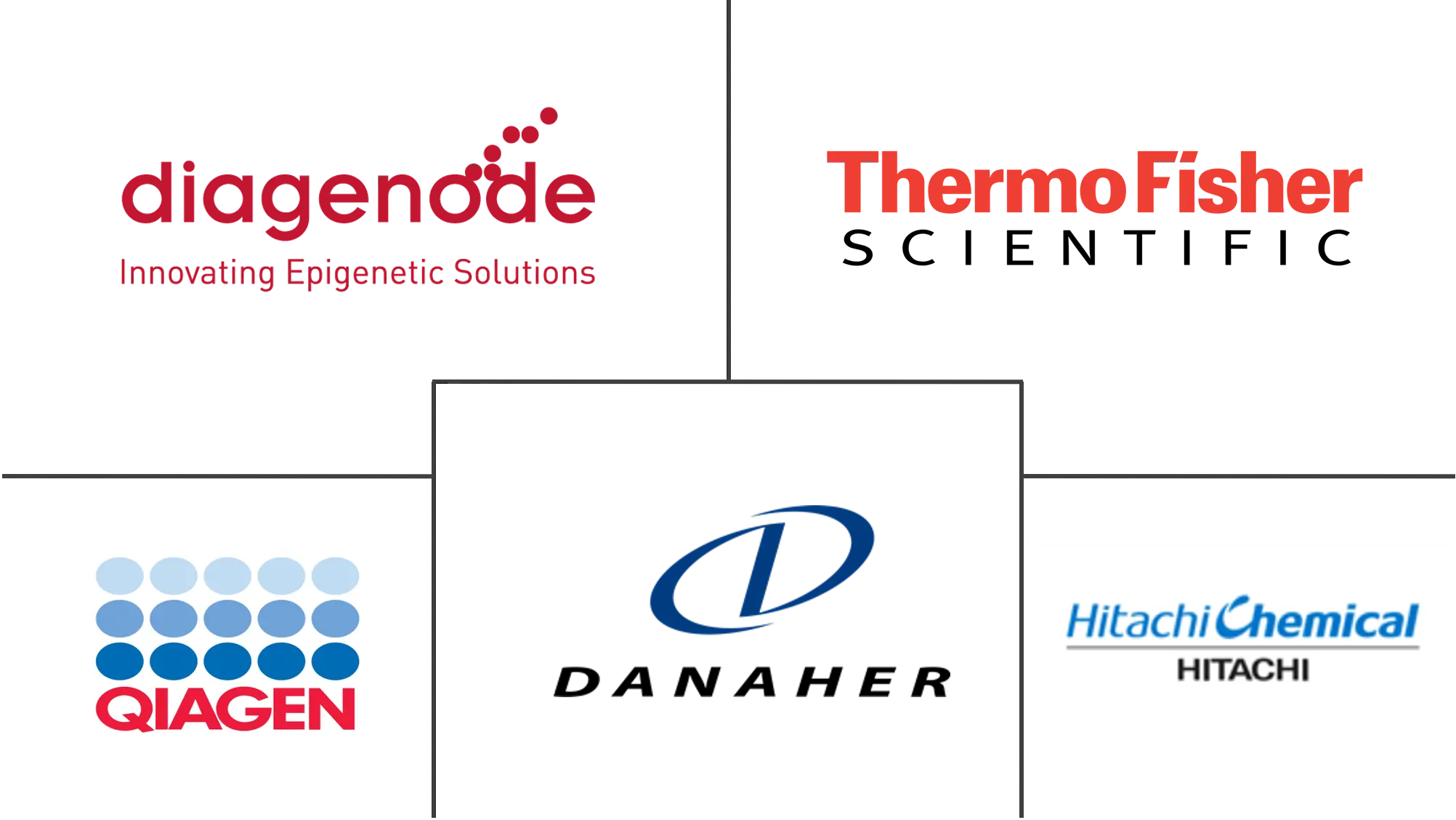Market Size of Exosomes Industry

| Study Period | 2019 - 2029 |
| Market Size (2024) | USD 429.99 Million |
| Market Size (2029) | USD 900.03 Million |
| CAGR (2024 - 2029) | 15.92 % |
| Fastest Growing Market | Asia Pacific |
| Largest Market | North America |
Major Players
*Disclaimer: Major Players sorted in no particular order |
Need a report that reflects how COVID-19 has impacted this market and its growth?
Exosome Market Analysis
The Exosomes Market size is estimated at USD 429.99 million in 2024, and is expected to reach USD 900.03 million by 2029, growing at a CAGR of 15.92% during the forecast period (2024-2029).
During the COVID-19 pandemic, there was a rising demand for exosomes. Exosomes are 30-120 nm extracellular vesicles that participate in several pathological conditions. Virus-infected cells release exosomes that are implicated in infection by transferring viral components such as viral-derived miRNAs and proteins. Exosomes also contain receptors for viruses that make recipient cells susceptible to virus entry. The spike protein cleavage by transmembrane protease serine 2 (TMPRSS2) is needed for COVID-19 virus entry and infection via interaction with the angiotensin-converting enzyme 2 (ACE2) receptor. There is evidence that exosomes transfer ACE2 to receipt cells, suggesting a supportive function for COVID-19 virus internalization and infection. A study published by the National Institute of Health in January 2022 suggests that the COVID-19 infection has a direct connection with exosomes in terms of the emergence of the virus inside the body and its spread. Additionally, it is observed that circulating exosomes carrying lung-associated self-antigens, viral antigens, and the 20S proteasome are more prevalent in individuals with coronavirus infection. Hence, with the above-mentioned factors, it is noticeable that the COVID-19 pandemic had a significant impact on the exosome market. However, post-pandemic, exosome study and research have evolved with their widening applications.
Certain factors that are driving market growth include the increasing prevalence of cancer, technological advancements in exosome isolation and analytical procedures, and increasing advanced applications of exosomes. The growing prevalence of cancer patients directly impacts the increased demand for exosomes. According to the GLOBOCAN 2020 report, 19.29 million people are living with cancer, and this number is expected to rise over the next two decades across the globe. With the rising number of cancer cases, it is believed that the application of exosomes in coping with cancer would be high, which is expected to contribute to the market growth.
Exosomes extracted from cow's milk are used to deliver therapeutic molecules against lung and breast cancer. Exosomes derived from specific sites of the body are promising candidates for anti-cancer vaccines due to their enhanced passive targeting and their small size, indigenous nature, and ability to cross biological barriers. Thus, the increase in the number of cancer cases in hospitals directly increases the demand for exosomes in diagnosis as well as therapeutics.
However, many technical difficulties need to be addressed to successfully implement exosomes in various applications. This is one of the primary hindrances to the growth of the exosome market. Some of the major difficulties include optimization of purification, increasing the homogeneity of exosomes, and efficient transfection strategies. This is further accompanied by a lack of technical information (like the type of rotor, diameter, volume, and viscosity of the sample), which restricts the maximum utilization of exosomes.
The cumbersome nature of the methods for isolation and purification and the inability to distinguish between different cancer stages with an incomplete understanding of the immune system may limit the exosome market. Moreover, other factors limiting the growth of this market are the stringent regulatory requirements for the approval and commercialization of exosome products.
